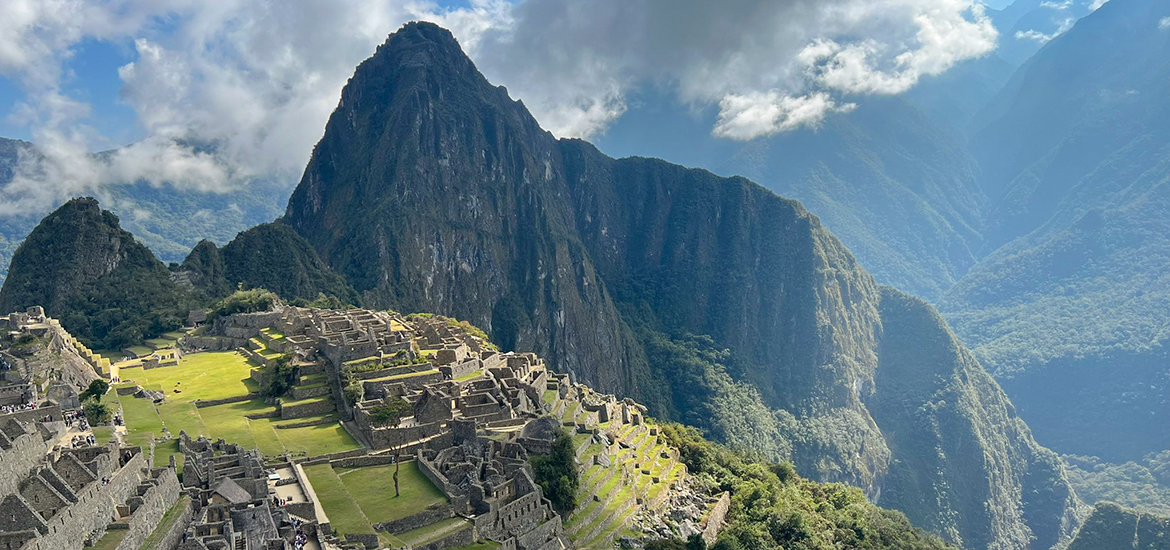Dreaming of visiting the awe-inspiring Machu Picchu in Peru? Prepare for a memorable trip. This magnificent Inca Citadel, located on the Andean landscape’s peaks, proudly proclaims its status as the Seven Wonders of the World.
To have the greatest possible experience, carefully plan your visit. We’ll help you find the best time to visit this iconic place on this guide. Considering the weather, trekking options, and ways to avoid the high season. This will ensure your trip is truly unforgettable.
Understanding the Best Time to Visit Machu Picchu
Machu Picchu Citadel encourages visitors year-round with its ancient appeal. However, careful travelers should consider their interests and dispositions to find the best time to start a Machu Picchu trip. To make an informed choice, let’s look at the most important aspects. They should impact when you visit this Citadel, which, by the way, is open year-round. However, if you’d like to have the finest experience, here’s what you should know::

Here are some more essentials to consider when setting up your trip:
- Open All Year: You can visit Machu Picchu any time of the year, so pick a time that works best for your schedule.
- Weather Factors: Peru’s weather conditions fluctuate by the seasons. If you prefer mild weather, consider visiting in April, May, or September.
- Different Paths: Apart from the well-known Inca Trail, there are other routes like Salkantay and Choquequirao. These might be less crowded and offer a unique view of the area.
- Get the required permits: Should you intend to traverse the Inca Trail, a permit is requisite. Limited availability might limit the supply, so we recommend securing yours in advance.
- Local Culture: For a comprehensive experience, we recommend immersing in the local culture beyond merely visiting the citadel. Spending time with local people, trying their food, and maybe visiting nearby towns like Aguas Calientes to learn more about the area is a good idea.
- Be Flexible: The weather in the Andes can be uncertain. Rainfall can occur even outside the designated rainy season. Thus, it is advisable to maintain flexibility in your planner for unforeseen circumstances.
- High Season: June, July, and August tend to be the busiest at Machu Picchu. During this season, you can expect larger crowds and a more bustling atmosphere. If you prefer a quieter experience, you might want to avoid these months.
- Travel to Machu Picchu: Getting to Machu Picchu involves a bit of planning. Most visitors arrive in Cusco, and from there, you can choose various transportation options, including trains and buses, to reach Aguas Calientes, the town at the base of Machu Picchu. Ensure your travel arrangements align with your preferred visit dates.
- Entering Machu Picchu: To enter Machu Picchu, you’ll need to secure entrance tickets in advance. It’s advisable to book these tickets well in advance because they offer specific time slots, and peak season can limit availability.
- Machu Picchu in February: Although February falls within the rainy season, it can still be a rewarding time to visit if you’re adequately prepared for occasional showers. In this month, you’ll encounter vibrant, lush green landscapes that provide a unique and refreshing backdrop for your journey.
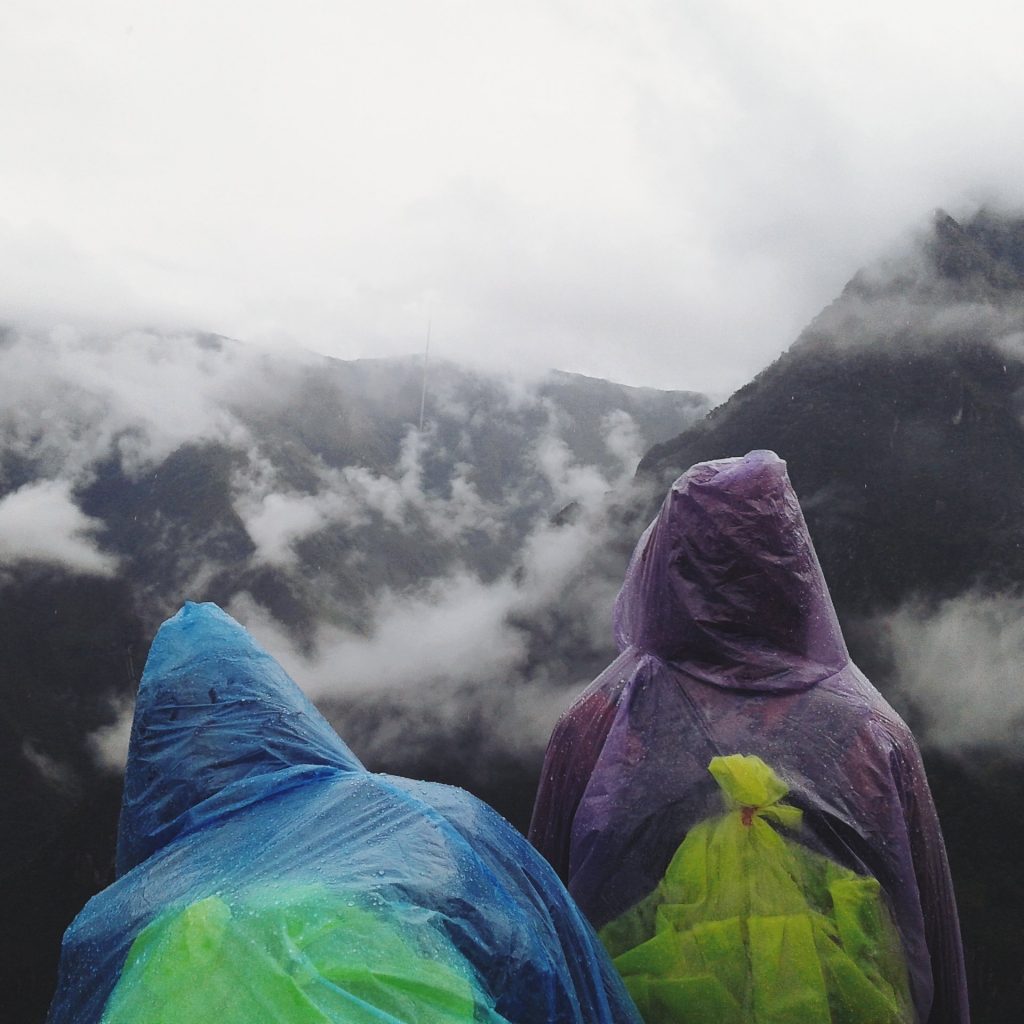
What sets February apart is the reduced tourist crowds, offering a more serene and intimate experience compared to the bustling summer months. To fully enjoy your visit during this period, make sure to pack essential rain gear and be ready to adapt to variable weather conditions. Embracing the occasional drizzle can lead to memorable moments amid the verdant beauty of Machu Picchu.
Remember that regardless of when you decide to visit Machu Picchu, careful planning will help ensure you have a memorable and enjoyable journey to this iconic Incan citadel.
The Dry Season: May to September
The dry season runs from May to September and is arguably the most popular time to visit Machu Picchu. During these months, you can expect clear skies and comfortable daytime temperatures.
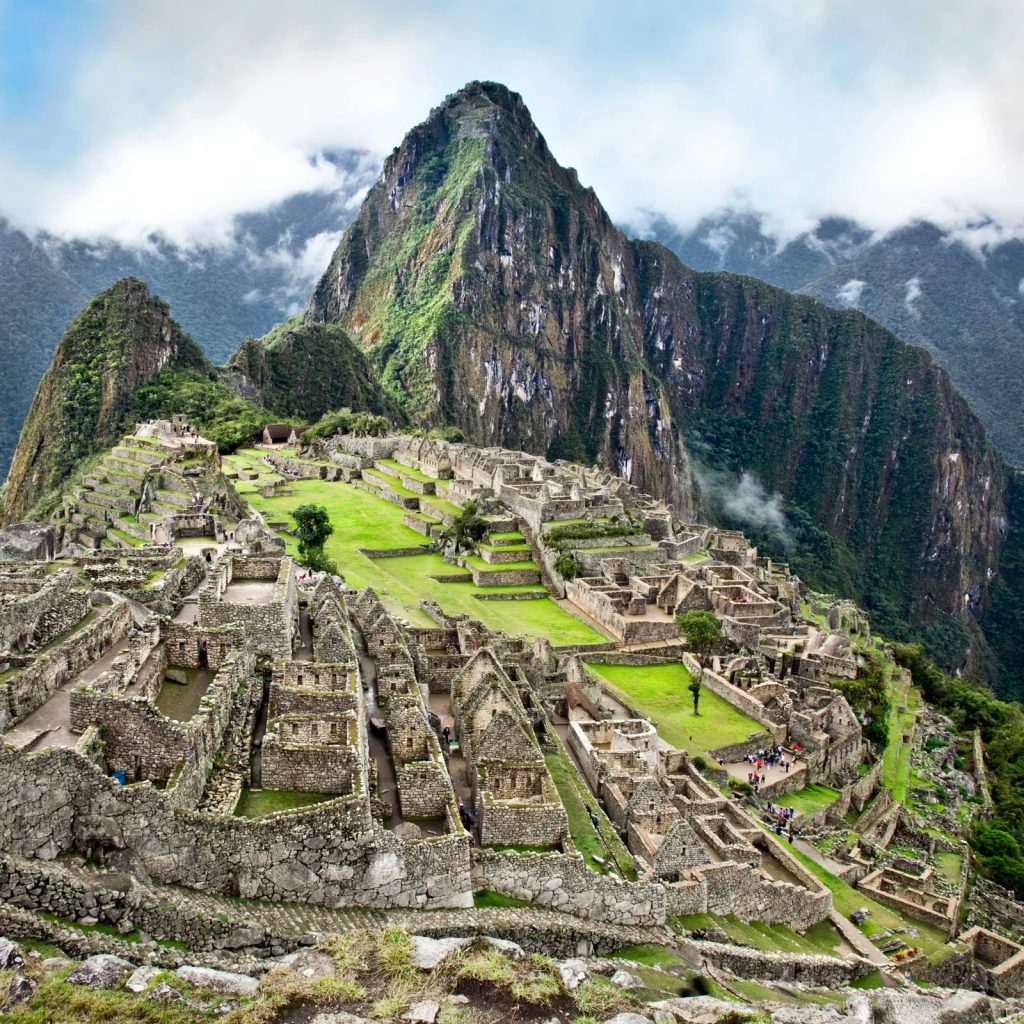
Advantages of Visiting During the Dry Season
- Stable Weather: The dry season offers the most predictable weather, with minimal rainfall and lower chances of trek disruptions.
- Lush Landscapes: The region’s vegetation is at its greenest during this time, providing a picturesque backdrop for your visit.
- Ideal for Hiking: If you plan to hike the Inca Trail or tackle Machu Picchu Mountain, the dry season offers the best conditions.
Drawbacks of Visiting During the Dry Season
- Busiest months: The dry season is the busiest time, meaning you’ll encounter larger crowds and longer lines.
- Advance Booking Required: To secure permits for the Inca Trail and train tickets, it’s essential to book well in advance.
- Cool Nights: While daytime temperatures are pleasant, nights can get quite chilly, so pack accordingly.
The Wet Season: October to April
The wet season, which extends from October to April, experiences increased rainfall and less predictable weather. Although it might not be the top choice for many travelers, visiting Machu Picchu during the wet season can provide a distinctive experience with certain advantages.
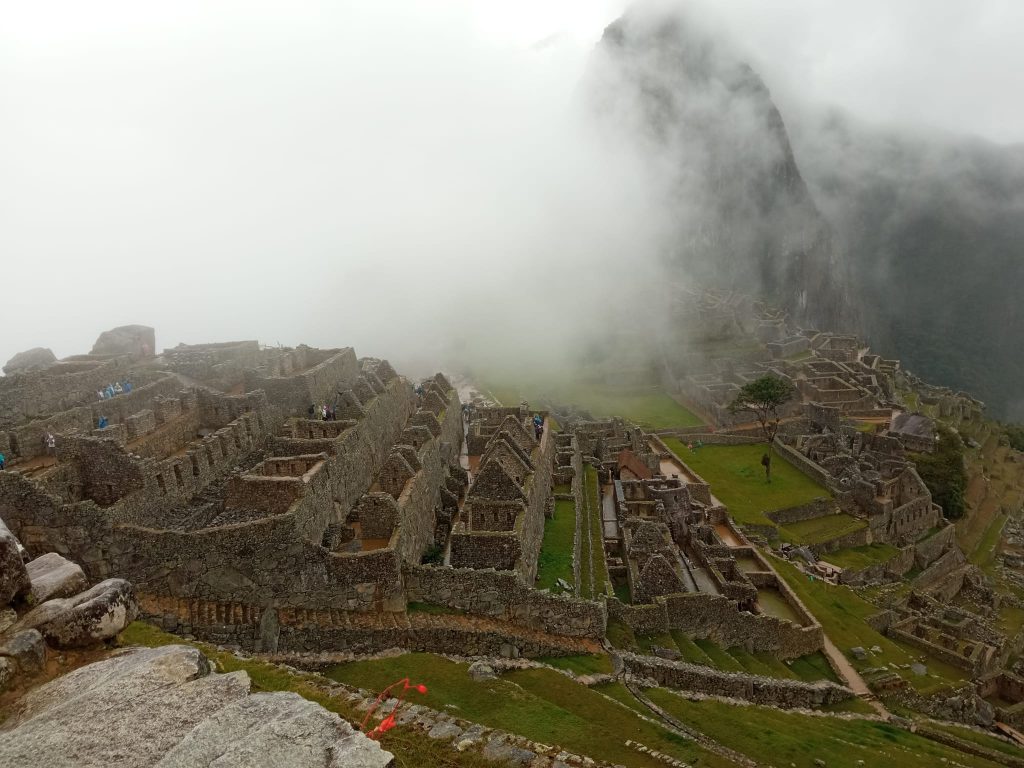
Advantages of Visiting During the Wet Season
- Quieter and More Budget-Friendly Experience: During this time of the year, you’ll find fewer tourists, making it a quieter and more peaceful visit to Machu Picchu. Smaller crowds allow for a more intimate connection with this ancient wonder. Additionally, because it’s the rainy season, you can often discount or lower prices on some services such as lodging, food, tours, etc
- Rainy Days: Be prepared for sporadic rain showers and overcast skies during your visit. While this weather may not offer the clear panoramic views associated with the dry season, it does bring vibrant greenery to the landscape and a mystical atmosphere as mist shrouds the citadel.
- Months of the Year: The wet season spans several months, so it’s essential to plan accordingly. October, November, and April generally experience less rain compared to the peak rainy months of December to March. If you prefer milder weather with occasional showers, visiting during these transitional months can be a better option.
- Lush and Green: The rain brings the landscape to life, creating vibrant and lush surroundings.
Drawbacks of Visiting During the Wet Season
- Unpredictable Weather: Anticipate heavy rain and potential trek delays from landslides. Maintaining flexibility in your Schedule is advisable.
- Muddy Trails: Trekking paths may be muddy and slippery, so appropriate footwear is essential.
- Limited Sunlight: Reduced daylight hours can impact the time you have to explore the site.
The Best Months to Visit Machu Picchu
If you’re looking for the absolute best time to visit Machu Picchu, consider planning your trip for April, May, or September. These months offer a delightful combination of favorable weather and manageable high seasons.
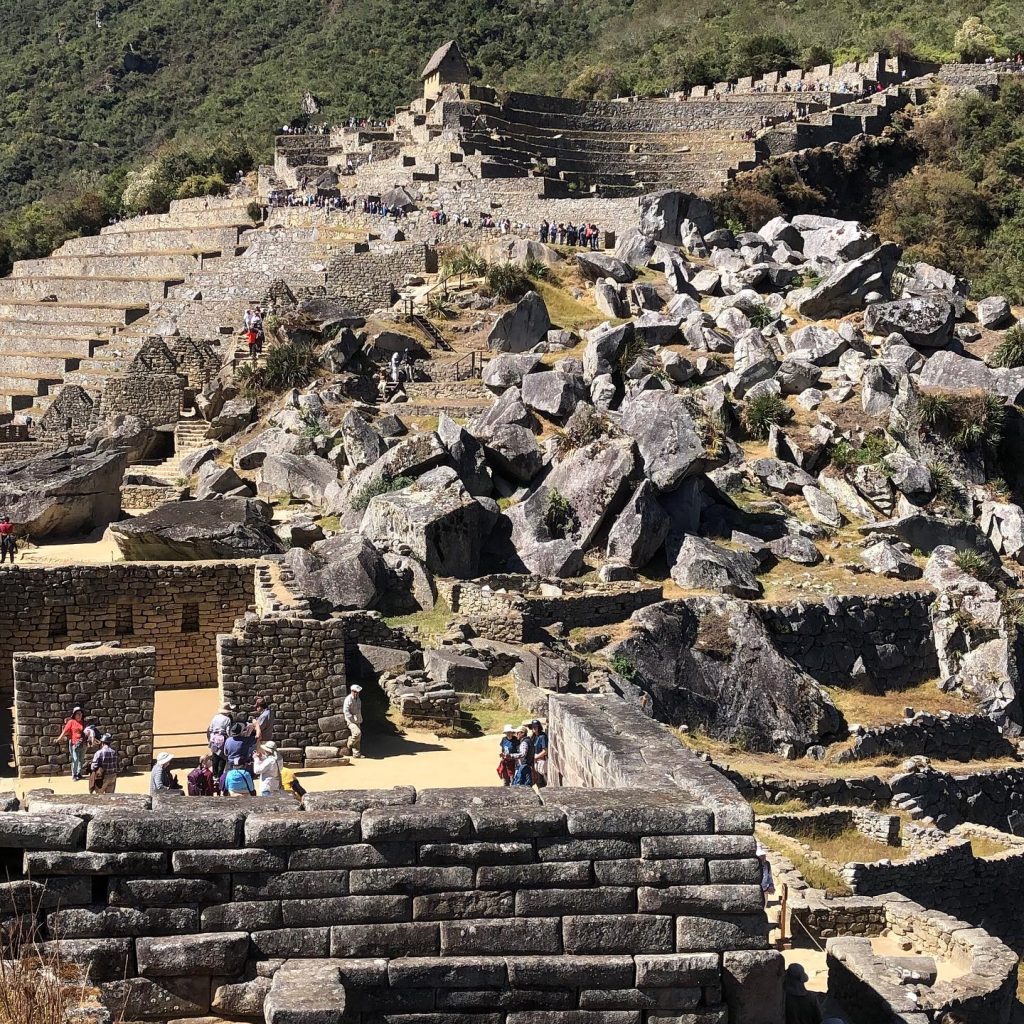
Advantages of Visiting in April, May, and September
- Balanced Weather: You can expect relatively stable weather conditions, with lower chances of heavy rain.
- Less Crowded: While still popular, in these months you’ll see fewer tourists compared to the peak dry season.
- Optimal Trekking: The conditions are perfect for hiking the Inca Trail or exploring Machu Picchu Mountain.
Drawbacks of Visiting in April, May, and September
- Cool Nights: Be prepared for cooler nighttime temperatures, especially at higher altitudes.
The High Season: June, July, and August
Machu Picchu’s dry season lasts from June to August, with sunny days and colder nighttime temperatures. Here’s some important details:
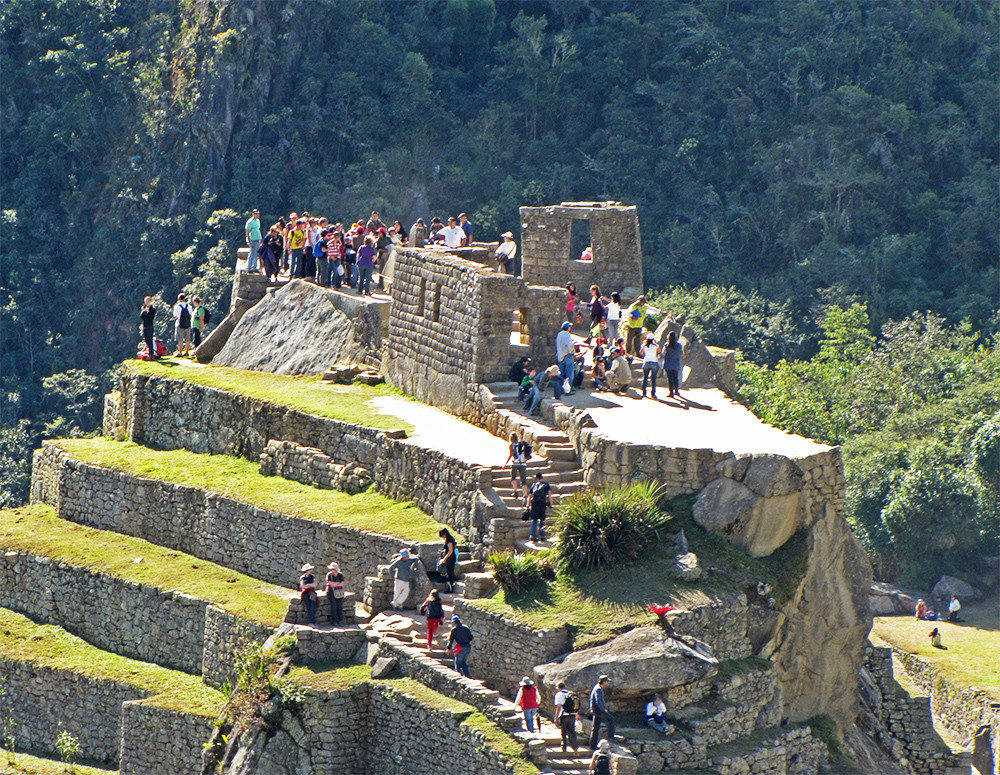
Advantages of visiting in June, July, and August:
- Stable Climate: These months mark the dry season in the region, which means you can expect more stable weather with less rainfall. This provides optimal conditions for enjoying clear and sunny panoramic views of Machu Picchu.
- Longer Days: With longer days and more hours of sunlight, you’ll have more time to explore the site and make the most of your visit.
- Cusco Festival in June: June is of great importance in Cusco because it marks the celebration of “Inti Raymi,” an Inca festival that commemorates the winter solstice and pays homage to the Sun god, Inti.
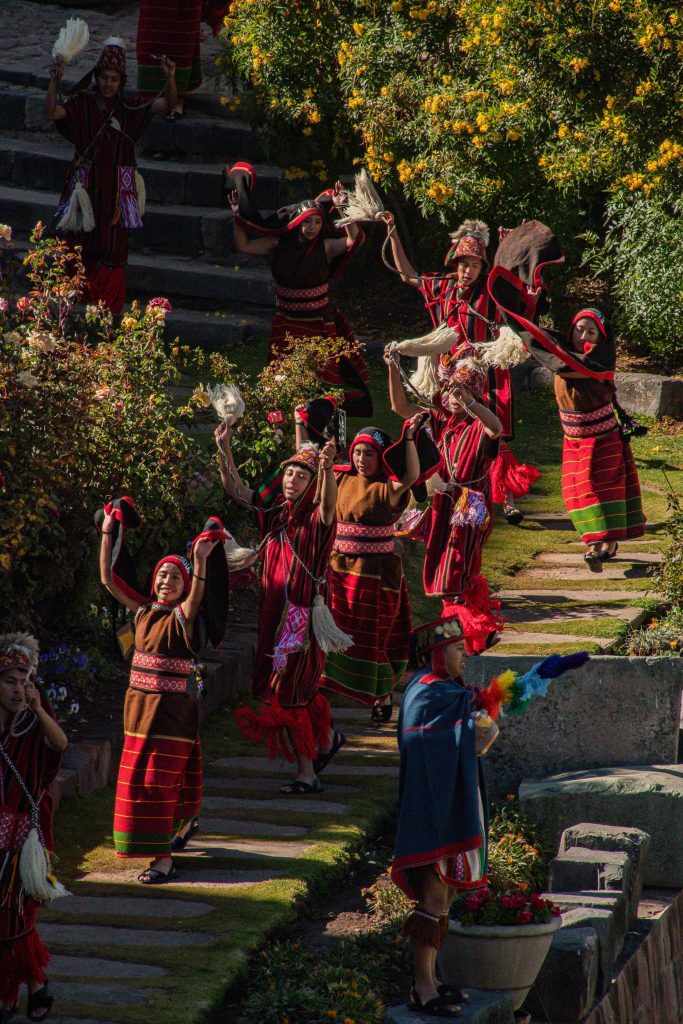
This festival takes place on June 24th and attracts visitors from all over the world. During Inti Raymi, theatrical performances and traditional ceremonies are held at the Sacsayhuamán esplanade, where participants wear traditional costumes. It’s a unique opportunity to experience Inca culture and the region’s history.
Drawbacks of Visiting in June, July, and August:
- Higher Crowds: The high season attracts many tourists, so Machu Picchu and its surroundings can be crowded. This can result in long lines and a less peaceful experience.
- Increased Prices: Owing to the high demand, costs for services like accommodation, food, and tours may be elevated during these months.
- Early Reservations: To ensure your entry to Machu Picchu and accommodation, it’s advisable to make reservations in advance, as spaces fill up quickly during the high season.
Alternative Treks and Strategies
While the classic Inca Trail is the most renowned trek to Machu Picchu, several alternative treks offer unique experiences and fewer high seasons.
Salkantay Trek, a Thrilling Alternative
People often dub the Salkantay Trek the “alternative Inca Trail. This challenging trek takes you through diverse landscapes, including high mountain passes and lush rainforests. The highlight is a breathtaking view of Machu Picchu from the Salkantay Pass.

Advantages of the Salkantay Trek
- Low attendance of people: The Salkantay Trek sees fewer trekkers than the Inca Trail, providing a more tranquil experience.
- Scenic Diversity: You’ll encounter a wide range of landscapes, from snow-capped peaks to tropical jungles.
- Spectacular Views: The Salkantay Trek offers one of the most stunning panoramic views of Machu Picchu.
Drawbacks of the Salkantay Trek
- Altitude: You’ll reach high altitudes, which can pose risks of altitude sickness.
Lares Trek, an Immersive Cultural Experience
The Lares Trek is ideal for travelers interested in both trekking and immersing themselves in the local culture. This trek takes you through traditional Quechua villages, offering a glimpse into Andean life.
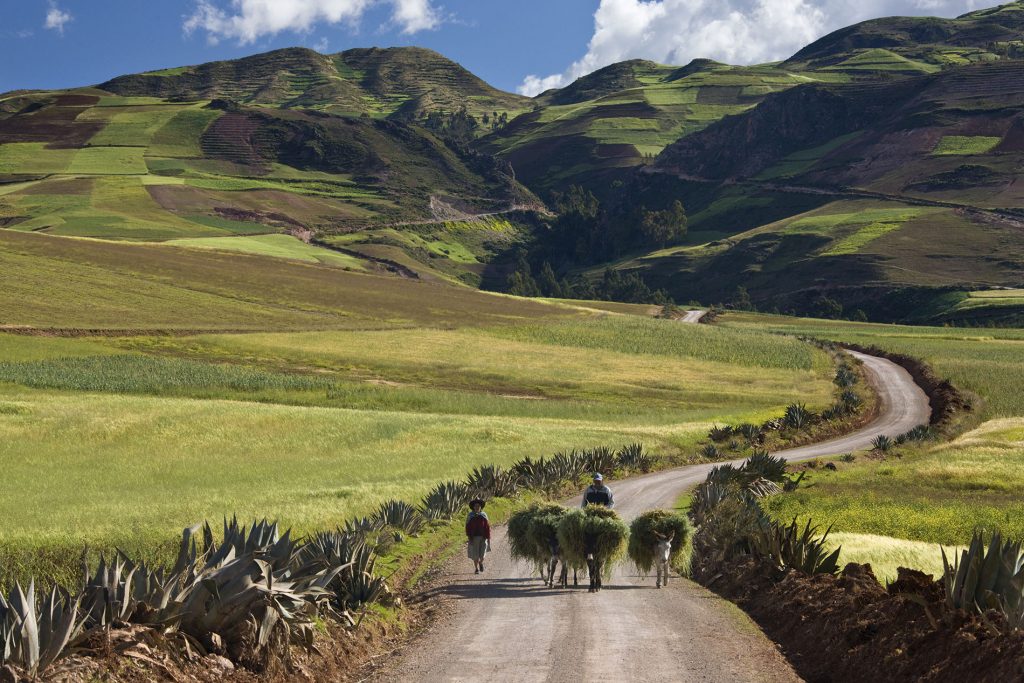
Advantages of the Lares Trek
- Cultural Immersion: You’ll have the opportunity to interact with indigenous communities and learn about their way of life.
- Scenic Beauty: The trek features stunning mountain landscapes, hot springs, and serene lakes.
- Fewer Tourists: The Lares Trek is less crowded than the Inca Trail, providing a more intimate experience.
Drawbacks of the Lares Trek
- Altitude: Like many treks in the region, the Lares Trek reaches high altitudes, so adaptation is crucial.
- Basic Facilities: Lodging and facilities along the trail may be more basic compared to the Inca Trail.
Choquequirao Trek, The Hidden Gem
The Choquequirao Trek provides an excellent alternative for those seeking a less-trodden path and frequently earns the nickname “sister city” of Machu Picchu. This trek leads to the secluded Choquequirao historical site, often likened to Machu Picchu for its grandeur.
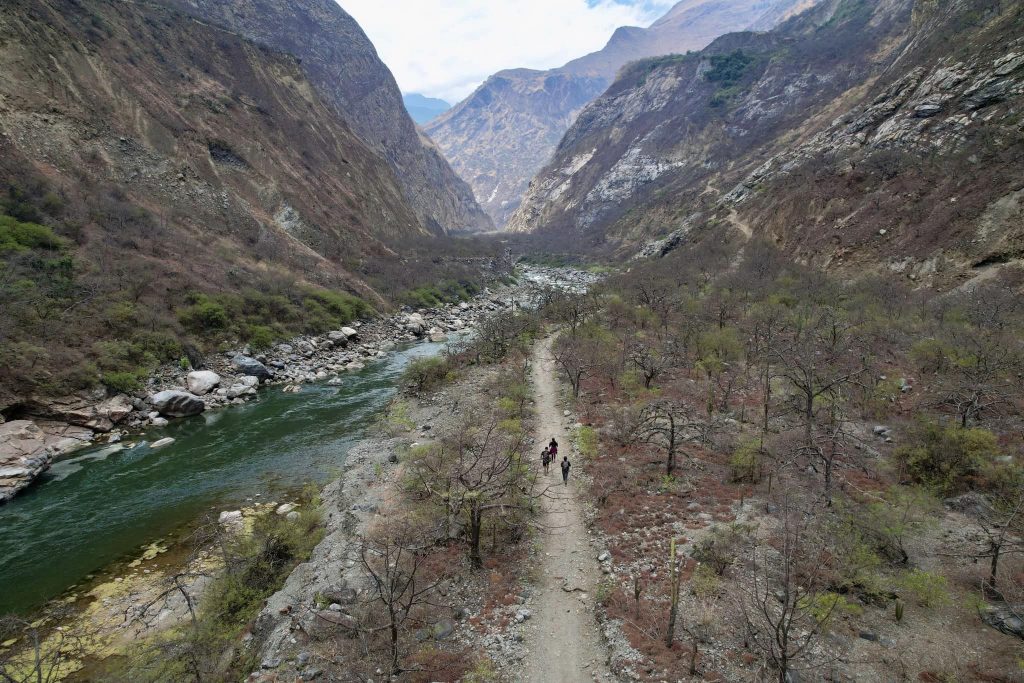
Advantages of the Choquequirao Trek
- Low attendance of people: Choquequirao sees significantly fewer visitors than Machu Picchu, allowing for a more secluded experience.
- Remote Adventure: This trek takes you deep into the Andean wilderness, providing a sense of exploration.
- Rich Antiquities: The ruins of Choquequirao are a treasure trove of Inca history and architecture.
Drawbacks of the Choquequirao Trek
- Challenging Terrain: The trek is challenging and involves steep ascents and descents.
- Basic Facilities: Be ready for rustic conditions, as facilities along the route are basic.
Tips for Making the Most of Your Machu Picchu Visit
To ensure your visit to Machu Picchu is as enjoyable as possible, consider the following tips:
Arrive Early in the Morning
Arriving early at Machu Picchu is one of the most effective strategies for enjoying this iconic site without the crowds. The gates open at 6:00 AM, so it’s a good idea to plan your visit to coincide with this early start time. By doing so, you’ll have the opportunity to explore the ancient citadel in the serene atmosphere of the morning, often with fewer visitors around.
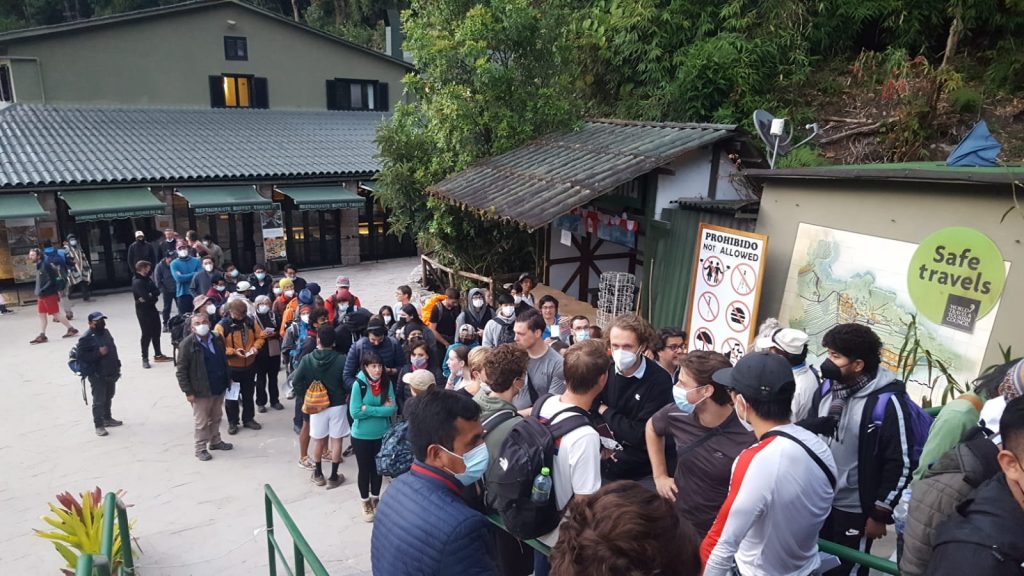
As you wander through the well-preserved structures and marvel at the breathtaking vistas, you’ll find that the soft morning light casts a magical glow over Machu Picchu, making it an ideal time for photography and reflection. The peace and tranquility of these early hours allow you to immerse yourself in the historical and mystical ambiance of the site, connecting with its rich Inca heritage.
Explore Machu Picchu Mountain
While the majority of visitors concentrate on exploring the citadel, it’s highly recommended to include Machu Picchu Mountain in your schedule. This trek offers breathtaking panoramic views of the entire site, providing an extraordinary perspective on its layout and sheer grandeur. It’s an experience that adds depth and wonder to your Machu Picchu adventure, making it truly remarkable.
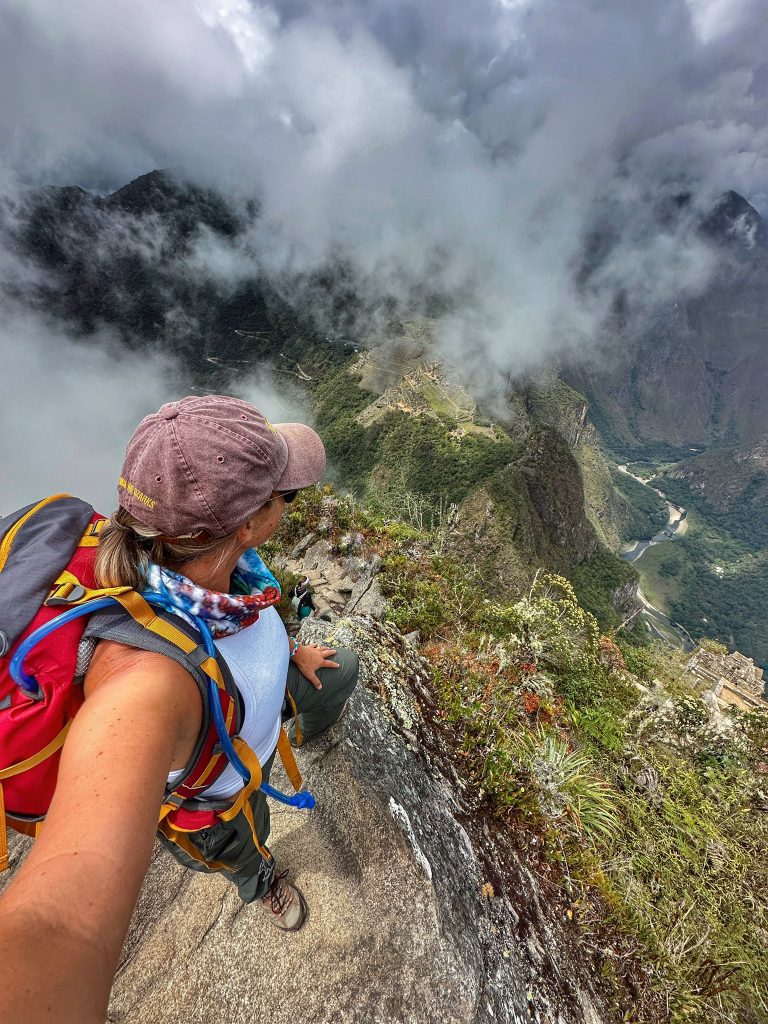
Visit During the Northern Hemisphere’s Spring and Fall
If you’re coming from the Northern Hemisphere, consider visiting Machu Picchu during your spring (April to June) or fall (September to November) for the best weather conditions.
Be Prepared for Long Lines
Regardless of when you visit, expect some lines at popular spots within the site, such as the entrance to Huayna Picchu. To minimize wait times, plan your visit accordingly and arrive early.
Frequently Asked Questions (FAQs)
Here are some common questions travelers have about visiting Machu Picchu, with additional information:
What is the best time to visit Machu Picchu to avoid crowds?
The best time to avoid crowds at Machu Picchu is during the wet season (October to April) and the shoulder seasons (April and October). These months typically see fewer tourists. If you prefer a quieter experience, consider the shoulder seasons.
Is it possible to plan a journey to Machu Picchu during the rainy season?
Indeed, it is feasible to explore Machu Picchu during the rainy season, also known as the wet season. While there may be occasional heavy rain, it’s still possible to explore the site. Prepare for wet conditions and potential trek disruptions. The lush, green landscapes during this time offer a unique perspective.
Is it viable to embark on the Inca Trail expedition throughout the wet season?
Authorities typically close the Inca Trail for maintenance during the rainy season, particularly in February, as there are concerns regarding landslides and the safety of trekkers. Therefore, attempting the Inca Trail during this period may not be possible or safe. It’s essential to verify the current status and availability of the Inca Trail before planning such a journey.
What constitutes the most suitable time of the year for ascending Machu Picchu Mountain?
The best time to hike Machu Picchu Mountain is during the dry season (May to September) when weather conditions are most favorable. This allows for clearer views and a safer hiking experience.
How can one mitigate extended queues at Machu Picchu
To avoid long lines at Machu Picchu. It is advisable to arrive early in the morning when the site opens. Then, consider exploring less-visited areas like Machu Picchu Mountain or alternative treks like the Salkantay or Choquequirao treks for a more secluded experience.
Conclusion
In conclusion, crafting your trip to Machu Picchu involves considering your preferences, budget, and appetite for adventure. The perfect time to visit this legendary site is a matter of personal choice, whether you favor the crystal-clear skies of the dry season, the serene ambiance of the wet season, or the balanced charm of the shoulder seasons. Each season offers its own unique allure, and Viagens Machu Picchu ensures that your journey to Machu Picchu will be a memorable experience tailored to your desires.

